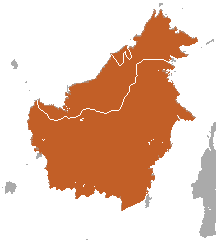| Greater nectar bat | |
|---|---|
| Scientific classification | |
| Kingdom: | Animalia |
| Phylum: | Chordata |
| Class: | Mammalia |
| Order: | Chiroptera |
| Family: | Pteropodidae |
| Genus: | Eonycteris |
| Species: | E. major |
| Binomial name | |
| Eonycteris major K. Andersen, 1910 | |
 | |
| Greater nectar bat range | |
The greater nectar bat or greater dawn bat (Eonycteris major) is a species of megabat within the genus Eonycteris . It is found in Brunei, Indonesia, Malaysia, and the Philippines. Its range is limited and includes Luzon to Maripipi in the Philippines and scattered parts of Borneo including Tuaran and Ranau in Sabah; Bau, Kuching and Bintulu in Sarawak. [2] [3]
